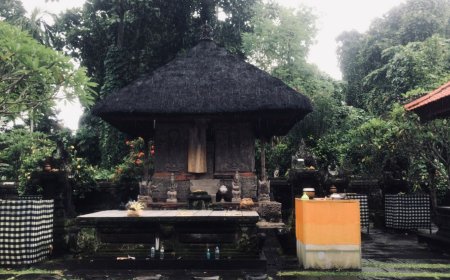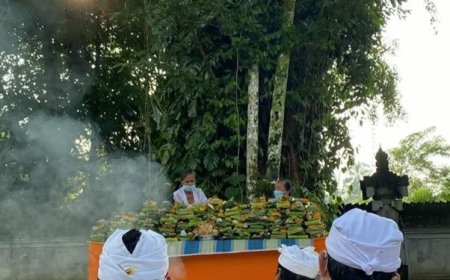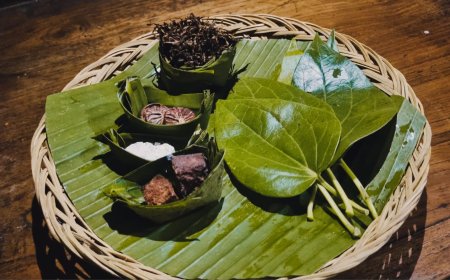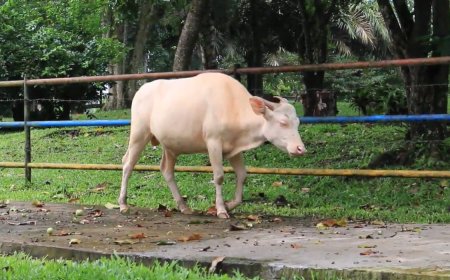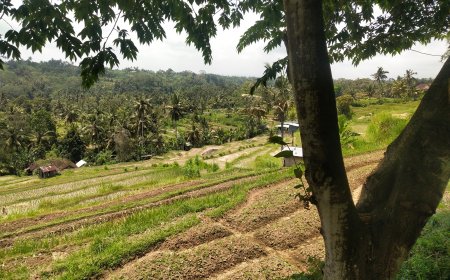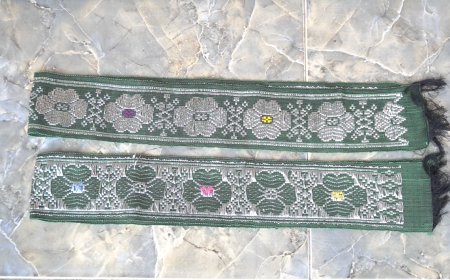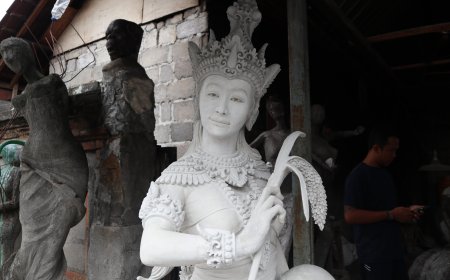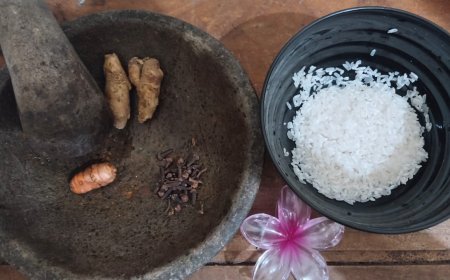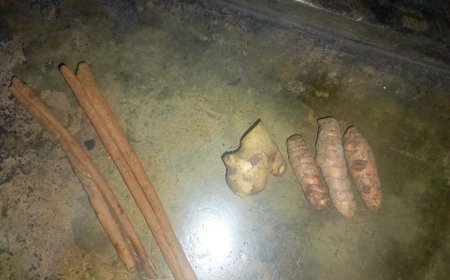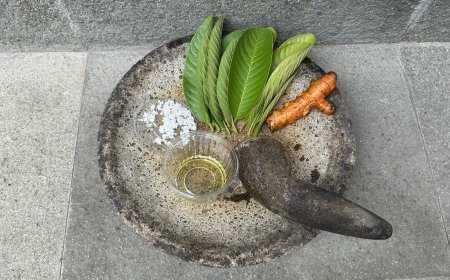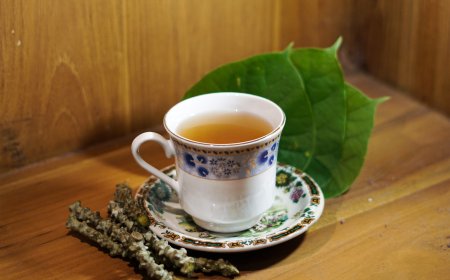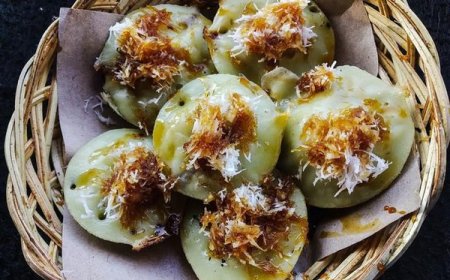Kue Gambir: A Local Mochi Wrapped in Pandan Leaves
Kue Gambir is a Balinese traditional snack with a chewy texture and a distinct pandan aroma. Made from glutinous rice flour and filled with a mixture of peanuts and palm sugar, this cake offers a unique sweet-savory flavor. Its handmade production process emphasizes craftsmanship and preserves culinary traditions passed down through generations. Although similar to Japanese mochi, Kue Gambir has local characteristics that set it apart, especially the use of pandan leaves as packaging.
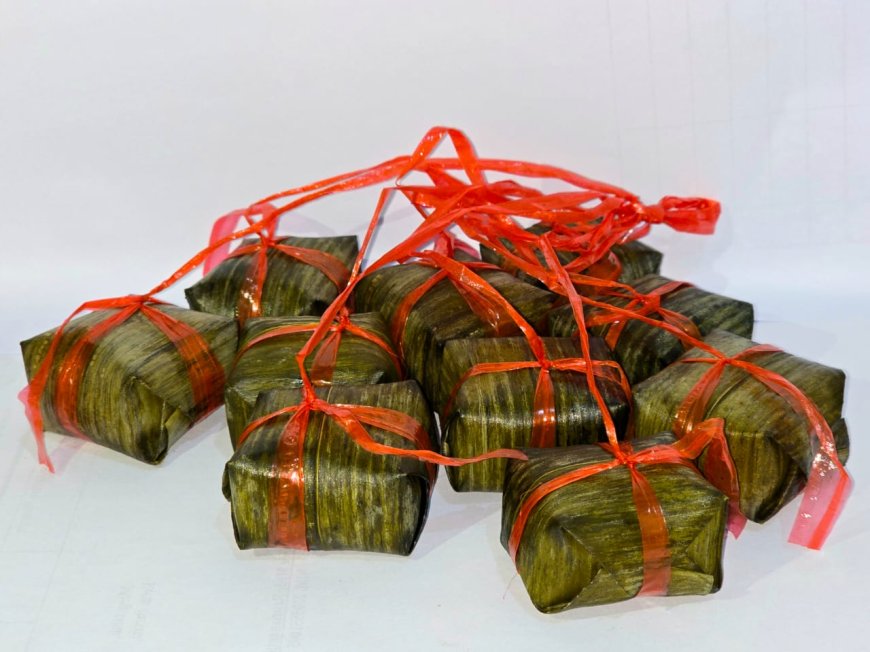
Indonesia, especially Bali, is rich in traditional culinary diversity that reflects the cultural and traditional variety of each region. One of the snacks that deserves to be introduced more widely is kue gambir. This treat is often referred to as the local version of mochi. Not only is it appealing in taste, but it also offers a unique appearance thanks to the pandan leaf wrapping that provides a distinctive aroma.
Kue gambir comes from Bali, specifically from the village of Tulikup in Gianyar Regency, known for its rich culinary tradition. This village is recognized as one of the centers of culinary tradition that continues to preserve food-making methods passed down through generations. This snack is famous for its characteristic pandan leaf wrapper and neat packaging technique, adding to its aesthetic appeal.
In the past, this snack was one of the main sources of income for the village’s residents, along with farming, trading, and making red brick crafts. However, over time, the number of kue gambir producers has declined. To preserve this culinary tradition, the village of Tulikup is now committed to promoting the potential of kue gambir, also known as Jaja Iku-iku, as part of the cultural heritage that must be maintained. To this day, the making of this cake is still done manually, involving family members and the community, making it a symbol of togetherness that is closely tied to Bali’s local culture.

Texture and Shape of Kue Gambir (Source: Private Collection)
The main ingredient of kue gambir is glutinous rice flour, which is also the primary ingredient of Japanese mochi. The glutinous rice flour gives it a distinctive chewy texture. The filling of kue gambir consists of a mixture of ground peanuts and palm sugar, creating a unique sweet-savory taste.
The process of making kue gambir begins by steaming the glutinous rice flour until it is cooked. Then, the dough is shaped and filled with the peanut and palm sugar mixture. The shaped dough is then wrapped in pandan leaves that are neatly tied before being steamed again to meld the flavors and aroma.

Kue Gambir's Filling (Source: Private Collection)
Although times have changed, the method of making this cake still retains traditional methods, reflecting the cultural values and ancestral heritage that have been preserved to this day, as a form of respect for the local wisdom that has been passed down through generations. The process of making this cake, carried out with great care and skill, not only produces a unique flavor but also symbolizes the determination to preserve tradition in an ever-evolving modern life. In this way, every bite of the cake not only provides enjoyment but also holds the long history of cultural journeys that are invaluable.
One of the unique qualities of kue gambir lies in the aroma of the pandan leaves that envelop the cake. The pandan leaves not only serve as wrapping but also impart a distinct, natural fragrance. The combination of the chewy texture of glutinous rice and the sweet taste of the filling creates a harmonious flavor that delights the taste buds.
The strong pandan aroma also enhances the sensory experience when enjoying this cake. Additionally, the use of natural ingredients makes kue gambir a healthy snack choice free from preservatives.
Although it has a similar texture to Japanese mochi, kue gambir has local characteristics that distinguish it. Mochi is usually served plain or coated with peanut powder, while kue gambir relies on the pandan aroma and rich traditional filling. The use of pandan leaves as wrapping also adds an aesthetic element and strengthens the local identity of the cake.
Although the process of making kue gambir still relies on traditional methods that require time and precision, this cake remains popular among locals and tourists alike. The intricate process only adds to its appeal as an authentic culinary delight that retains its original taste and quality.

Kue Gambir Neatly Wrapped in Pandan Leaves (Source: Private Collection)
Kue gambir is often sought after by tourists who wish to experience the richness of Balinese cuisine. The unique pandan leaf wrapper and the sweet-savory taste of the peanut and palm sugar filling make it an exotic and memorable souvenir choice. By continuing to maintain its authenticity and introducing this cake through various platforms, kue gambir has the potential to be more widely recognized as part of Bali’s cultural identity.
Preserving kue gambir means safeguarding the traditions and cultural identity embedded in it. This effort can be carried out through culinary education in schools, traditional food festivals, and promotion via social media. The role of the younger generation is crucial in maintaining the sustainability of this cake so that it does not fade with time.
Kue gambir is not just a food item but a part of cultural heritage that reflects creativity and local wisdom. By combining tradition and innovation, this cake has great potential to continue to thrive and be enjoyed by various groups.
Kue gambir is a perfect example of how local wisdom can create delicious and unique foods. With its chewy texture similar to Japanese mochi and the fragrant aroma of pandan leaves, this cake exudes the charm of the Indonesian archipelago. Through modernization and proper promotion, kue gambir can become an iconic Indonesian culinary delight that is proud of on the world stage.
Therefore, preserving tradition and continuing to develop new creations of kue gambir is an important step to ensure that this heritage remains alive and cherished by future generations.

